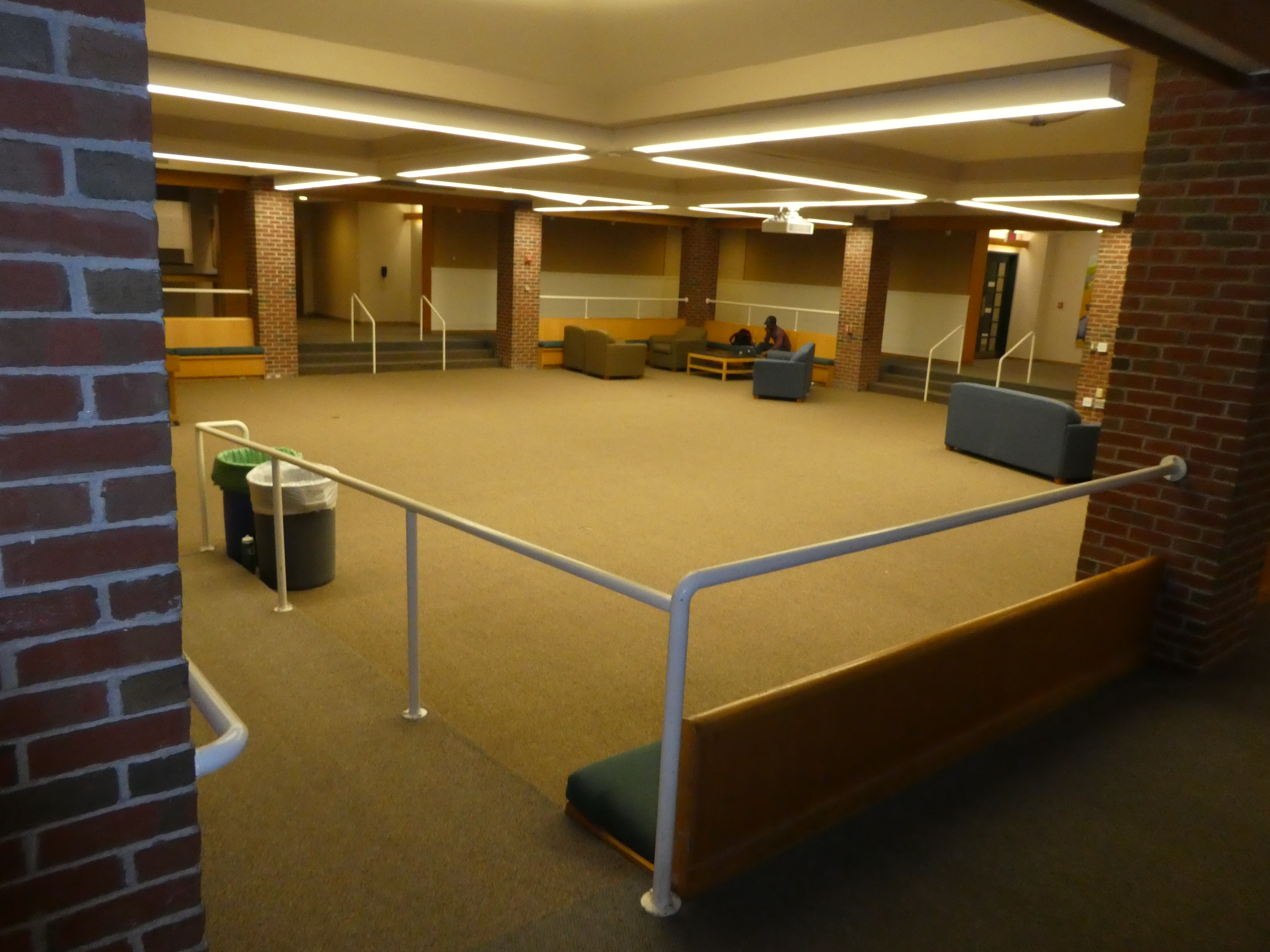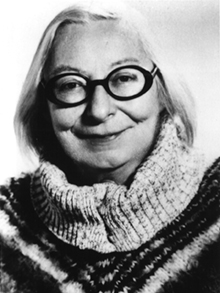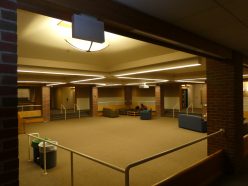
Brace Commons is located in the basement of the East Wheelock complex, and as a result lacks natural light with the exception of the sunlight that sneaks in with a gust of cold air when someone enters from outside. In response, designers employed harsh fluorescent lighting that makes the area feel slightly too bright.
In Brace Commons, there is nothing that you cannot see, as these lights are never turned off at any time of the day. Freshman Dante Mack commented that “the light kind of brings people in because the areas around it are darker and it’s just harder to see and interact with your friends.” The light is inviting, and draws people into the space. While it may very well be inviting, this expensive use of electricity seems puzzling, until it is considered that the lighting promotes safety and deters sexual assault.
According to the National Sexual Violence Resource Center, one in four female students in college are sexually assaulted at some point in their college experiences. However, shockingly, only 9% of these sexual assault cases get reported. Sexual assault is a constant fear for male and female students across college campuses.

Jane Jacobs claims that there must be eyes upon a space to promote safety. It is unrealistic for S&S officers to cover every inch of campus to prevent all crime, so much of the responsibility of upholding safety falls on regular members of the Dartmouth community. These students do not need to make a deliberate attempt to search for crime, but rather they just go about their everyday lives. If they see something suspicious, they respond by calling S&S or taking action themselves.
Light is vital to promoting safety because, as Jacobs puts it, it makes “eyes count for more because their range is greater.” However, Jacobs cautions that the lighting and any other design elements that promote safety are of no use “unless eyes are there, and unless in the brains behind those eyes is the almost unconscious reassurance of general street support in upholding civilization.” Light serves as a supplement to the sub-identity created by Brace Commons.
Jacobs illuminates that community identity and prevention of sexual assault are inherently tied. According to sexual assault expert John M. Darley, “The dynamics of bystander behavior are very different when people know the perpetrator or victim, versus when they are strangers.” Bystanders are more likely to intervene when they know the victim or perpetrator involved.
Clery Act data reveals that four in five on-campus rapes occur in residential halls. Brace Commons is at the center of four residential halls, and helps to work against this troubling statistic. By planning Brace Commons to foster interaction and build community, designers greatly improved the odds that bystanders would know potential victims of sexual assault in the space. As a result, these bystanders would be much more likely to take action if they were ever to witness the sexual assault of one of their fellow community members in their residential hall.
